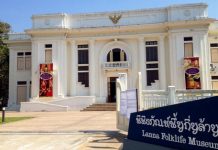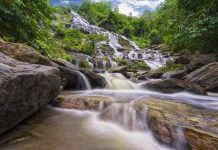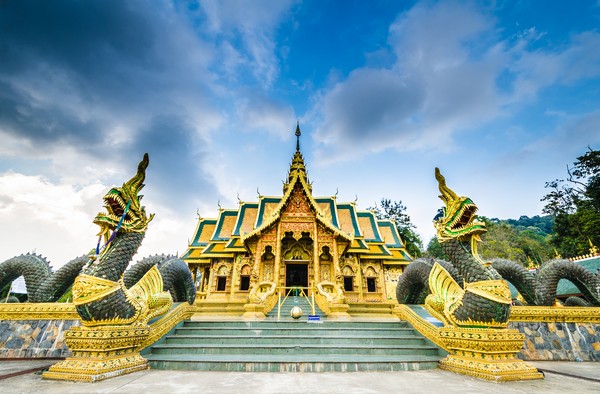
Wat Phraphutthabat Si Roi, witness the oldest Buddha’s footprint in Thailand
Wat Phraphutthabat Si Roi is one of the well-known temples in the ancient city of Chiang Mai, especially among the pilgrimage travelers. The holy place locates at Mae Rim district in Chiang Mai which considered as the famous and top-ranked of the must-not-miss temples of the city.
Background of the Temple
Lengend of The Buddhas’ footprint
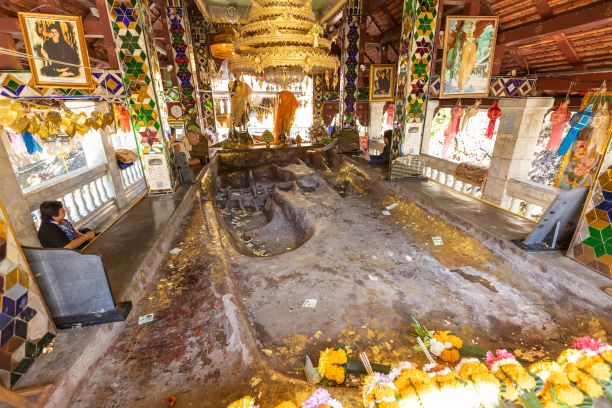
Following the mythology which said that once upon the time that the Gautama Buddha traveled to expand his religion in the land that is currently Thailand with about 500 of the disciples. When the Buddha arrived at a mountain in the north called “Phu Vephan Bunphot” the Buddha with his perception acknowledged that this range used to be the location that other 3 Buddhas of the Bhadrakalpa visited in the past namely
- Kakusandha (the first Buddha of the Bhadrakalpa)
- Konagamana (the second Buddha of the Bhadrakalpa) and
- Kassapa (the third Buddha of the Bhadrakalpa)
Those of which the Lord Buddhas imprinted the footprint on an enormous stone over this top. So that, he spoke to Ananda Thera that all those Buddhas visited this place and marked their print on the rock including to the future Buddha “Maitreya” that will come here and imprint his footprint at the same spot to be one footprint.

After that, the Gautama Buddha stepped his foot over the previous footprints to be “Phraputthabat Si Roi” or the Four Buddha Footprints together with made a vow to let the celestials invite his relics to enshrine at the location of this remarkable Buddhas’ footprint once he entered to the nirvana. Phrabuttabat Si Roi is formerly known in the name “Phraphutthabat Rungrang” or “Phraphutthabat Rang Yiew” (the condor’s nest).
The Buddhas’ footprint installed at this sacred place are:
- The first footprint belongs to Kakusandha Buddha which is the largest one with 6 meters in its length
- The second one belongs to Konagamana Buddha which is 4.5 meters in its length
- The third footprint belongs to Kassapa Buddha which is the third one with 4.5 meters long and
- The fourth one belongs to Gautama Buddha (the currently Buddhism) which is the smallest mark with about 2 meters in its length
The time passed until the reign of King Thamma Chang Puek, the ruler of Chiang Mai. The King along with his servant in about 500 ascended to esteem to the Four Buddhas’ Footprint; also he graciously ordered to build vihara (sanctuary) as a temporary shelter for the sacred establishing mark. Previously, those of whom want to see the footprints on the stone had to climb up by the ladder, and it’s prohibited allow only men to ascend to the spot.
After that, King Thamma Chang Puek bestowed to make the scaffolding platform rounded the holy stone with the shelter, sequent the ladies would able to witness the sacred footprints. Later, Princess Dara Rasmi, the consort of King Chulalongkorn (Rama V) of Siam visited the site to worship the Buddhas’ footprint. And the princess with her profound esteem considered to construct a vihara to dedicate to the sacred monument and the Buddhism. Nowadays, the edifice is restored in which just only the wall, floor, and pedestal that are original ones from previous.
And then, in 1929, Khruba Sriwichai the Lanna venerable monk visited and worshiped the Buddhas’ footprint at the site. The famous monk dismantled the old structure that King Thamma Chag Puek made for temporary and replace with a brand-new building to cover the Buddhas’ footprint, also mortared the sacred marks in order to preserve them to be with the Buddhism religion from generation to generation.
Wat Phraphutthabat Si Roi, the landmark for the pilgrims
Among the monastery complex are lots of interesting religious sites according to the belief to remembrance to the Lord Buddha such as “Pha Khao Yen” the dining area of the Buddha and his disciples, “Sacred Pond” after finishing the meal, the Buddha washed his alms-bowl in this pond, and there was a Naga Serpent was watching the Buddha with loyalty. Presently, it is favorable for the visitors to throw the glass marble into the pond with the belief as to worship to the Naga.
The Ubosot (ordination hall)

Next, the ubosot (ordination hall) with four porches that was constructed as on the prognostic of the abbot. The building has four verandas reaching out in all four directions with the spired hall featuring the elegant and marvelous style. The entrance is the fresco images of “Makorn Khai Naga” or The Magara disgorges the Naga in both sides. And the interior of the sermon hall (vihara) is Magnifique with the delicate pattern, and the main Buddha image said that to be housed inside with the numbers of the gold Buddha images in various attitudes.
Four Buddhas’ Footprint
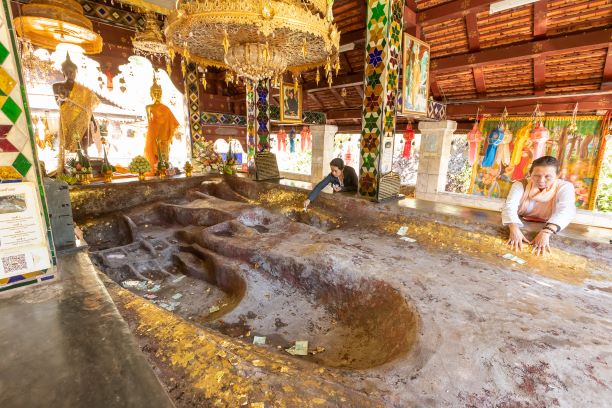
Definitely, the highlighted spot that attracts lots of travelers to the temple is “Phraphutthabat Si Roi” or the Four Buddhas’ Footprint which is registered as an ancient object placed inside the half wood and marble architecture in simple style. The pediment of the building furnished with the flowers and plants pattern and the beautiful columns that decorated with the stained glass.
In the past, traveling to the temple needed high potential and extremely esteem since all along the way to reach the site was steep and rough. Plus, the pilgrims had to trace through the forest, brooks, and diversity of wildlife. Formerly, the Buddha’s footprints which are on a large stone could be reached by climbing over the bamboo ladder, and it allowed only men to be up there. Luckily, Phrya Thamma Chang Puek, the ruler of Chiang Mai in the ancient time who used to visit the site and had deep faith in Buddhism graciously created a temporary structure to shelter the monument to facilitate the pilgrims both men and ladies to pay respect to the Buddhas’ footprints equally.
Khruba Sriwichai
Later, the famous Buddhist monk of Lanna “Khruba Sriwichai” did renovate the site by building the new structure to cover the former one permanently resulting to the next generation to make a pilgrimage to the Buddha’s mark abidingly.
Additionally, it is not just only the Buddhist in general that press their way to this holy place. In the past, King Naresuan of Ayutthaya when he moved his troop to beat Hang city, the king traveled to visit the site and worshipped the Buddhas’ footprint once he acknowledged about the holy place, instantly. To honor the sacred marks King Naresuan disrobed his accessories included breast chain and apparel and placed within the Buddhas’ footprint together with other offerings – flowers, incense stick, candle, and popped rice.
Moreover, the king organized the celebration event for 7 nights. Besides, King Mangrai, the king of the ancient Chiang Mai with his consort and servants also made a journey to pay homage at this temple, as well. And the Princess Dara Rasmi, the consort of King Rama V of the Rattanakosin Kingdom is another royalty who visited the site along with built a building dedicated to the Buddha.
Things to know before visit Wat Phraphutthabat Si Roi
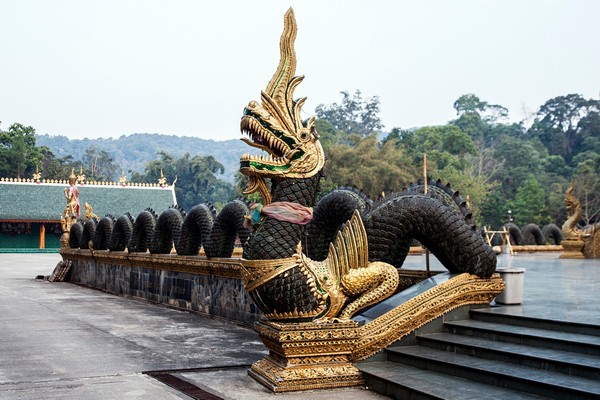
- Should get dress properly when visit and pay homage at the site.
- Special activity organized at the site such as handmade tiny tea pillow workshop with the villagers, the visitors, please feel free to contact for more information at the shops locating within the temple area.
- There is plenty of coffee shops service at the front of the temple which is both local and on-trend style.
- The intersection on the way to the temple is Wat Maung Ka that the tourist can stop by to visit and worship at Khun Luang Wilanka Monument, the 13th King of the Lanna Kingdom.
How to get to Wat Phraphutthabat Si Roi
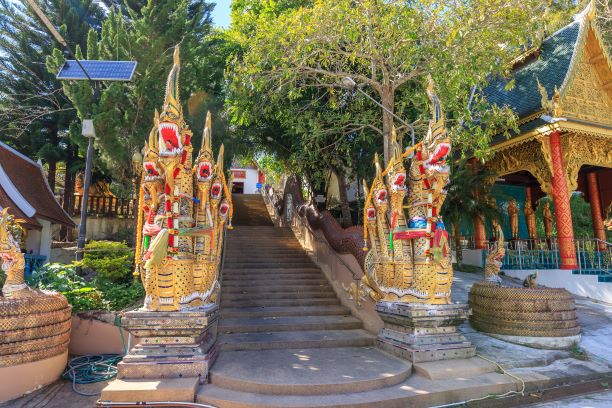
From the city town of Chiang Mai, you drive on the way heading to Mae Rim district on the highway number 107. When you arrive at Mae Rim District Office, keeps going straight on to the trisection to go to Sameung district. Then, you drive for 1 km and on the left is Rim Nuea Sub District Administrative Organization Office and there is a left fork lead to the temple (the total distance from the sub-district office to the temple is about 34 km) which takes time around one and a half hour.
Along the route to the temple, you will indulge with the charming scenery of rice field and vast abundant rainforest that you can have a deep breath for O2.


